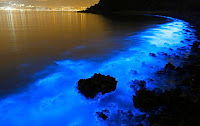Top 5 Deep Sea Mysteries
On this blog, i want to talk about top 5 deep sea mysteries.
1.Colossal squid

The colossal squid sometimes called the Antartic or giant cranch squid is believed to be the largest squid species in terms of mass. It is only knows member of the genus Mesonychoteuthis. It is knows from only a few specimens, and currect estimates put its maximum size at 12 -14 m long and weighing possibly up to 750 kg , based on analysis of smaller and immature speciments , making it the largest known invertebrate.
2. Megalodons
 Megalodons hark is a gigantic extinct shark that lived approxiimately 23 to 2.6 million years ago . This shark is bigger than the humpback shark.
Megalodons hark is a gigantic extinct shark that lived approxiimately 23 to 2.6 million years ago . This shark is bigger than the humpback shark.Regarded as one of the largest and most powerful predators in vertebrated history, megalodon probably had a profound in impact on the structure of marine communities fossil remains suggest that this giant shark reached of 18 metres
.3. Cuban Underwater City
In his underworld : The mysterious the origions of Civilization , Graham Hancock examines the numerous structures that have been discovered underwater around the world. Most of the sites that Hancock discusses lie less than 120 meters below sea level , which comes as no surprise since the sea level never fell below during the time Homo Sapiens walked the earth. Submerged over 700 meters underwater, the Cuban city discovered by Paulina Zelitsky and Paul Weinzweig during joint Cuban - Canadian expedition is the singular exception
4.Leptocephalus Giganteus
The giant leptocephalus (Coloconger giganteus) is an eel in the family Colocongridae (worm eels/short-tail eels).[2] It was described by Peter Henry John Castle in 1959.[3] It is a marine, deep-water dwelling eel which is distributed worldwide.[2]
It is suspected that the larvae from which the species was described belong to a species in the genus Notacanthus.
5.
The Milky Sea Effect
Milky seas, or mareel, is a condition on the ocean where large areas of seawater (up to 6,000 sq mi or 16,000 km2) appear to glow brilliantly enough at night to be seen by satellites orbiting Earth. Modern science only tentatively attributes this effect to bioluminescent bacteria or dinoflagellates, causing the ocean to uniformly glow an eerie blue at night. However, there is no modern research to prove that bioluminescent bacteria are capable of illuminating the ocean from horizon to horizon and for days at a time, as described in mariner's tales for centuries (notably appearing in chapter 23 of Jules Verne's Twenty Thousand Leagues Under the Sea); and, in fact, the effect has not been rigorously documented nor thoroughly explained, even in modern times.
Source : wikipedia
Source : wikipedia






Comments
Post a Comment